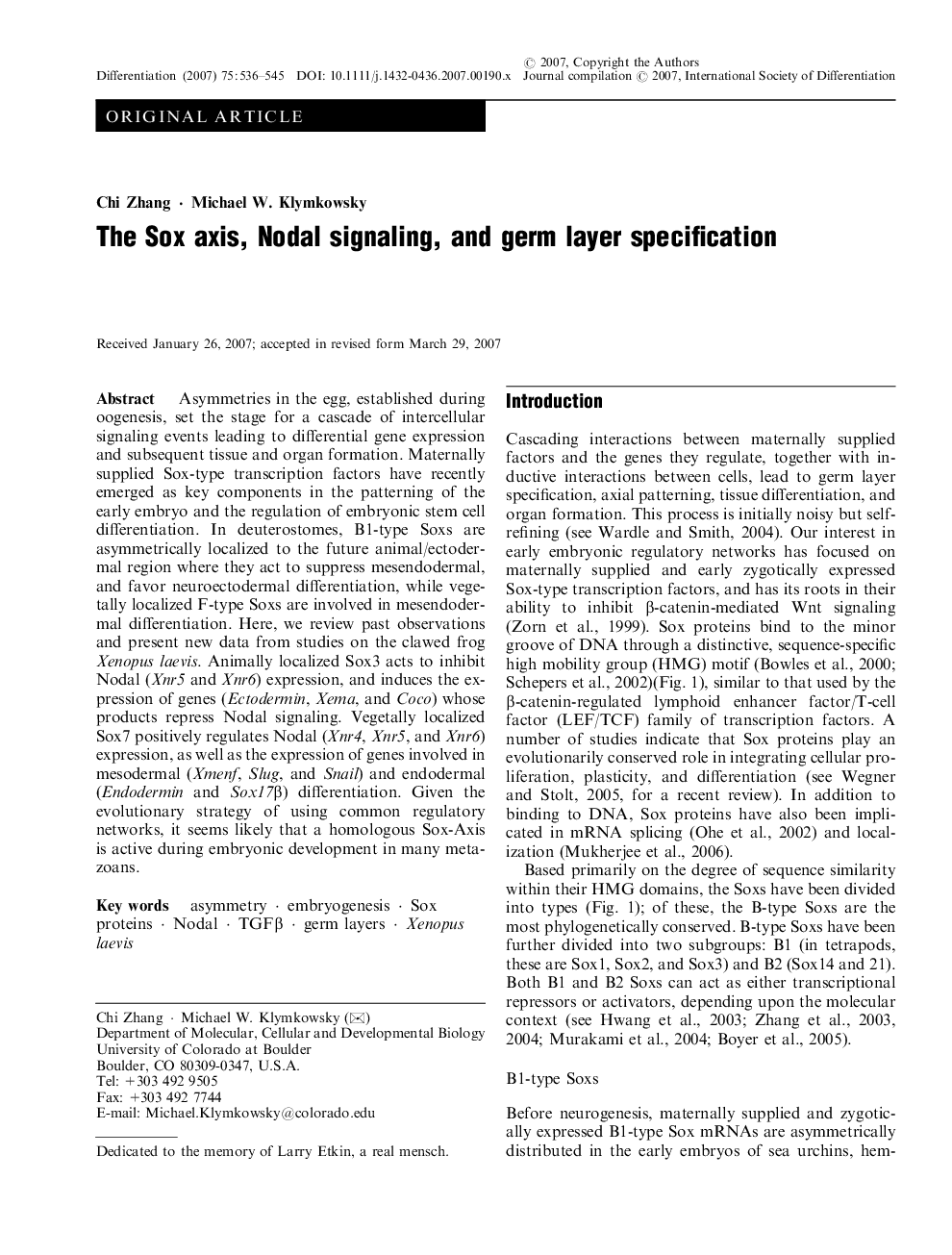| کد مقاله | کد نشریه | سال انتشار | مقاله انگلیسی | نسخه تمام متن |
|---|---|---|---|---|
| 2120142 | 1085445 | 2007 | 10 صفحه PDF | دانلود رایگان |
عنوان انگلیسی مقاله ISI
The Sox axis, Nodal signaling, and germ layer specification
دانلود مقاله + سفارش ترجمه
دانلود مقاله ISI انگلیسی
رایگان برای ایرانیان
کلمات کلیدی
موضوعات مرتبط
علوم زیستی و بیوفناوری
بیوشیمی، ژنتیک و زیست شناسی مولکولی
تحقیقات سرطان
پیش نمایش صفحه اول مقاله

چکیده انگلیسی
Asymmetries in the egg, established during oogenesis, set the stage for a cascade of intercellular signaling events leading to differential gene expression and subsequent tissue and organ formation. Maternally supplied Sox-type transcription factors have recently emerged as key components in the patterning of the early embryo and the regulation of embryonic stem cell differentiation. In deuterostomes, B1-type Soxs are asymmetrically localized to the future animal/ectodermal region where they act to suppress mesendodermal, and favor neuroectodermal differentiation, while vegetally localized F-type Soxs are involved in mesendodermal differentiation. Here, we review past observations and present new data from studies on the clawed frog Xenopus laevis. Animally localized Sox3 acts to inhibit Nodal (Xnr5 and Xnr6) expression, and induces the expression of genes (Ectodermin, Xema, and Coco) whose products repress Nodal signaling. Vegetally localized Sox7 positively regulates Nodal (Xnr4, Xnr5, and Xnr6) expression, as well as the expression of genes involved in mesodermal (Xmenf, Slug, and Snail) and endodermal (Endodermin and Sox17β) differentiation. Given the evolutionary strategy of using common regulatory networks, it seems likely that a homologous Sox-Axis is active during embryonic development in many metazoans.
ناشر
Database: Elsevier - ScienceDirect (ساینس دایرکت)
Journal: Differentiation - Volume 75, Issue 6, July 2007, Pages 536-545
Journal: Differentiation - Volume 75, Issue 6, July 2007, Pages 536-545
نویسندگان
Chi Zhang, Michael W. Klymkowsky,